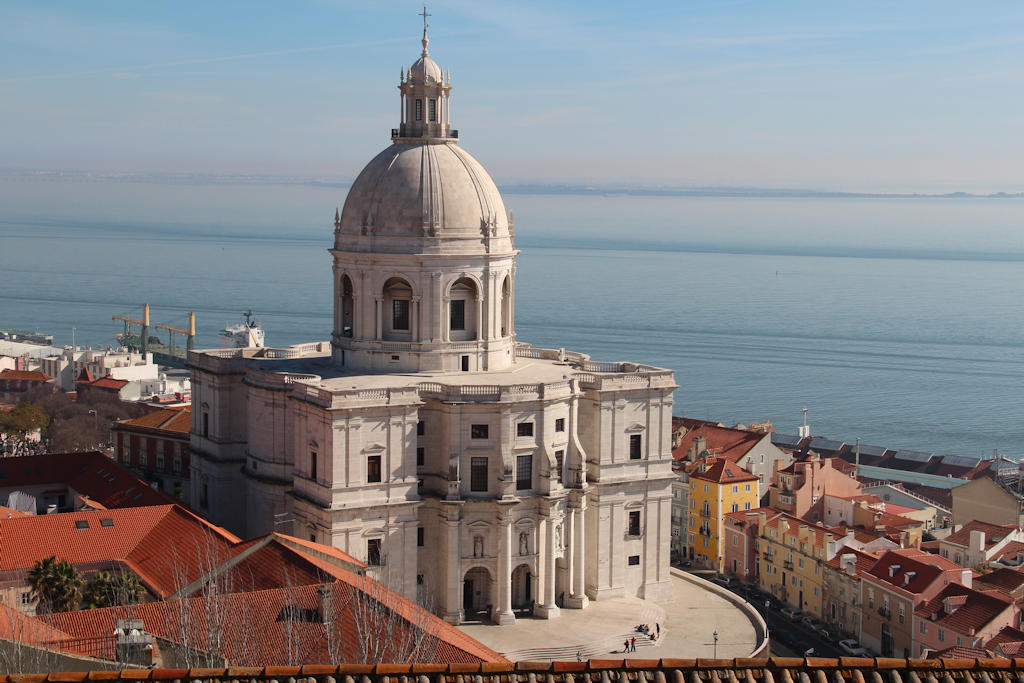Construction persisted from 1682 to 1712, but the demise of the architect in the latter year led to King John V diverting his attention and resources to the colossal Convent of Mafra. Consequently, the church remained unfinished for centuries, turning "obras de Santa Engrácia" into a Portuguese idiom for a never-ending construction project. Eventually, a dome was added, and the church was finally reinaugurated in 1966.
João Antunes introduced an ingenious concept to Santa Engrácia, previously unseen in Portugal. The church adopts a centralized floor plan with a Greek cross shape. Square towers grace each corner (although the pinnacles were never completed), and the baroque-inspired façades feature undulating designs reminiscent of Borromini's work. The main entrance showcases a beautiful baroque portal adorned with Portugal's coat of arms held by two angels. The church's grand central dome, completed in the 20th century, adds to its allure.
Inside, the harmonious interior captivates visitors with its curved spaces within the central crossing and naves. The floor and walls showcase elaborate baroque marble patterns in polychrome. Notably, the magnificent 18th-century baroque organ was brought from Lisbon Cathedral, enhancing the auditory experience.
Lisbon.vip Recommends
The National Pantheon
During the First Portuguese Republic in 1916, the Church of Santa Engrácia underwent a transformation into the National Pantheon. However, its completion only occurred in 1966, under the governance of Dictator António de Oliveira Salazar. Speculation arose that the project aimed to accommodate the eventual burials of Salazar and other high-ranking Estado Novo officials. However, when Salazar passed away in 1970, his wishes were revealed to be interment in his hometown of Vimieiro near Santa Comba Dão. Apart from Oscar Carmona, no other Estado Novo officials found their final resting place here.The National Pantheon houses the remains and cenotaphs of numerous esteemed individuals who played pivotal roles in Portuguese history and culture. Among those entombed are Presidents Manuel de Arriaga, Teófilo Braga, Sidónio Pais, and Óscar Carmona, as well as presidential candidate Humberto Delgado. Renowned writers such as João de Deus, Almeida Garrett, Guerra Junqueiro, Aquilino Ribeiro, and Sophia de Mello Breyner Andresen also find their eternal repose within these walls. Fado singer Amália Rodrigues and football legend Eusébio are likewise honored here. Additionally, cenotaphs pay tribute to notable figures such as Luís de Camões, Pedro Álvares Cabral, Afonso de Albuquerque, Nuno Álvares Pereira, Vasco da Gama, Prince Henry the Navigator, and Aristides de Sousa Mendes.
The Church of Santa Engrácia in the Graça neighborhood, now the National Pantheon, stands as an architectural marvel and a profound testament to Portuguese heritage, attracting visitors from around the world who seek to witness the intersection of history, art, and reverence.
Map View



